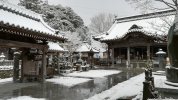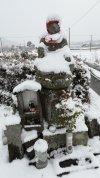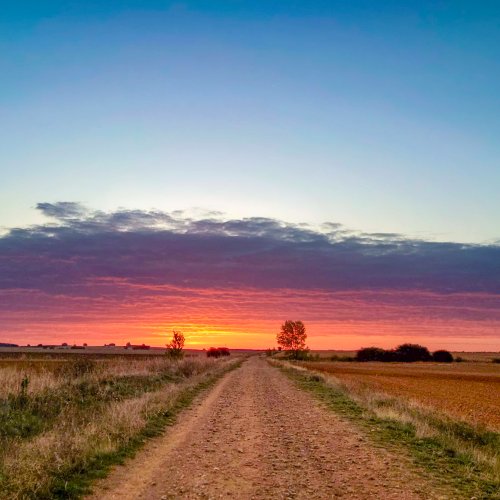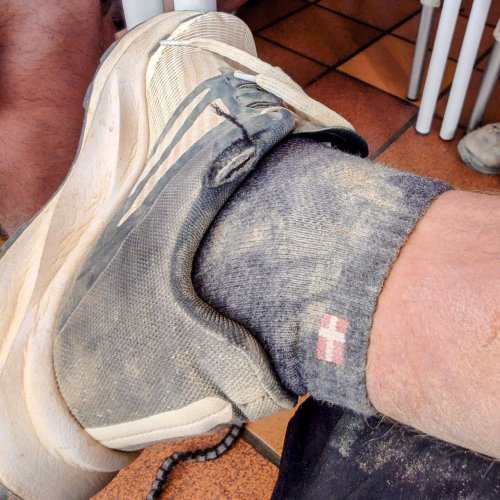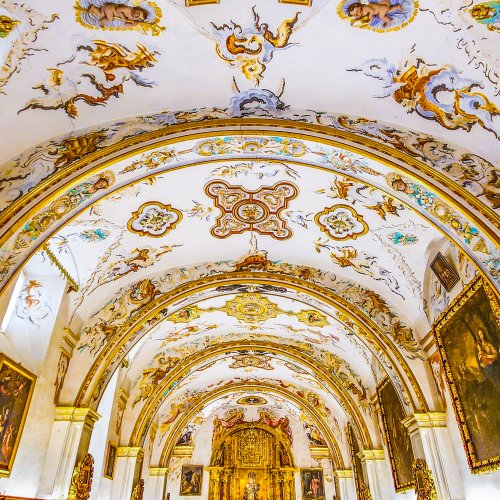Burton Axxe
Member
- Time of past OR future Camino
- April-May 2023
I have lived in Japan for 35 years but had never considered the Shikoku circuit until I started approaching retirement. A few weeks back, I finally took a one-week plunge (by domestic air to Kansai Airport, then to Kobe, and a bus from there). Since I had only this limited time, I aimed to get a taste of the 'Henro' experience by covering four separate clusters of temples. Having been on the Frances twice last year, I'll share a few comparative thoughts below:
1. On the Camino you have one destination, Santiago de Compostela. On the Shikoku, you have 88. There is no goal per se but you are instead expected to stop, pray/do the rituals, and get your sello at each temple. On the Camino you can admire and enter various religious structures as you choose but with Shikoku, the whole point is do a basic ritual at each.
2. The Shikoku circuit is based upon Shingon Buddhism, which is a rather esoteric branch, based on the teachings and life of Kukai (Kobo Daishi). Of course, you don't have to be a follower to be a pilgrim but it will triple your appreciation if you learn a bit about the faith and its practices/theology in advance -- even more so than RC on the Camino.
3. On popular Camino routes there is an entire infrastructure built around the Camino - albergues, donativos, cafe/bars, places for reflection and encouragement - but there is much, much less of this on the Shikoku. The pilgrim feels a sense of being accompanied, having a shared purpose, on the Camino but this sense is far less tangible on the Shikoku. The infrastructure you meet in Shikoku is 99.9% the local/neighborhood one.
4. On the Shikoku, there will always be a convenience store (invariably open 24hrs) nearby, as well as supermarkets and restaurants open 9 AM to 9 PM. You have to worry much less about such places being closed in Japan. On the other hand, bustling, characterful bars open midday, with locals crowded inside for a glass or two, is NOT A THING in Shikoku. Very, very few establishments seem geared towards pilgrims.
5. Waymarkers and other route indicators are fewer and harder to see on the Shikoku.
6. The equivalent to albergues are 'Henro Houses' but they are often a distance away from the route or temples. There is almost no sight of lodgings lining the route like one sees on the popular Caminos.
7. The temples are often not the finest examples of Japanese religious architecture and are, in many cases, plebian neighbourhood temples -- they simply have a historical connection with Kukai. There may not be anyone there to greet or share with you, save for the official who will stamp your nokkyo-cho book for 300 yen.
8. Public transport in the temple cluster areas is very good and cheap. In more remote sections it will echo the quieter bits of the Frances.
9. As you might expect, most locals speak no English and a great deal of signage and information is in Japanese That's not a problem for me but it will be for most foreign visitors.
10. There is a full set of pilgrim wear/gear that some/many pilgrims adopt but I just went for the Hakui (white smock) and the credential book (buy these at the first temple, near Tokushima). Foreign pilgrims may look a little too much like cosplay afficianados if they are decked out in full Henro regalia.
Full disclosure :
I went at the wrong time (midweek late January). I hit the coldest days of the year with a strong wind in my face. I did not enjoy myself. There was no camaraderie -- I saw only two other pilgrims (Japanese) who greeted but otherwise ignored me. I was the only guest at the Henro Houses and the proprietors did not seem conducive to chatting (even in Japanese). The temple grounds were empty of people. The routes between them were almost exclusively on dull prefectural (busy) roads or on backstreets that looked just like those of my hometown in Kyushu.
Japanese Buddhist adherents will likely find the pilgrimage of spiritual value, and foreign visitors coming to Japan for the first time might find their surroundings stimulating in their relative 'exoticness', but it is unlikely to feel special to a visitor who is used the country. For more of a welcome or sense of companionship, I'd advise potential pilgrims come in April, May, or late September to mid-November.
1. On the Camino you have one destination, Santiago de Compostela. On the Shikoku, you have 88. There is no goal per se but you are instead expected to stop, pray/do the rituals, and get your sello at each temple. On the Camino you can admire and enter various religious structures as you choose but with Shikoku, the whole point is do a basic ritual at each.
2. The Shikoku circuit is based upon Shingon Buddhism, which is a rather esoteric branch, based on the teachings and life of Kukai (Kobo Daishi). Of course, you don't have to be a follower to be a pilgrim but it will triple your appreciation if you learn a bit about the faith and its practices/theology in advance -- even more so than RC on the Camino.
3. On popular Camino routes there is an entire infrastructure built around the Camino - albergues, donativos, cafe/bars, places for reflection and encouragement - but there is much, much less of this on the Shikoku. The pilgrim feels a sense of being accompanied, having a shared purpose, on the Camino but this sense is far less tangible on the Shikoku. The infrastructure you meet in Shikoku is 99.9% the local/neighborhood one.
4. On the Shikoku, there will always be a convenience store (invariably open 24hrs) nearby, as well as supermarkets and restaurants open 9 AM to 9 PM. You have to worry much less about such places being closed in Japan. On the other hand, bustling, characterful bars open midday, with locals crowded inside for a glass or two, is NOT A THING in Shikoku. Very, very few establishments seem geared towards pilgrims.
5. Waymarkers and other route indicators are fewer and harder to see on the Shikoku.
6. The equivalent to albergues are 'Henro Houses' but they are often a distance away from the route or temples. There is almost no sight of lodgings lining the route like one sees on the popular Caminos.
7. The temples are often not the finest examples of Japanese religious architecture and are, in many cases, plebian neighbourhood temples -- they simply have a historical connection with Kukai. There may not be anyone there to greet or share with you, save for the official who will stamp your nokkyo-cho book for 300 yen.
8. Public transport in the temple cluster areas is very good and cheap. In more remote sections it will echo the quieter bits of the Frances.
9. As you might expect, most locals speak no English and a great deal of signage and information is in Japanese That's not a problem for me but it will be for most foreign visitors.
10. There is a full set of pilgrim wear/gear that some/many pilgrims adopt but I just went for the Hakui (white smock) and the credential book (buy these at the first temple, near Tokushima). Foreign pilgrims may look a little too much like cosplay afficianados if they are decked out in full Henro regalia.
Full disclosure :
I went at the wrong time (midweek late January). I hit the coldest days of the year with a strong wind in my face. I did not enjoy myself. There was no camaraderie -- I saw only two other pilgrims (Japanese) who greeted but otherwise ignored me. I was the only guest at the Henro Houses and the proprietors did not seem conducive to chatting (even in Japanese). The temple grounds were empty of people. The routes between them were almost exclusively on dull prefectural (busy) roads or on backstreets that looked just like those of my hometown in Kyushu.
Japanese Buddhist adherents will likely find the pilgrimage of spiritual value, and foreign visitors coming to Japan for the first time might find their surroundings stimulating in their relative 'exoticness', but it is unlikely to feel special to a visitor who is used the country. For more of a welcome or sense of companionship, I'd advise potential pilgrims come in April, May, or late September to mid-November.
Last edited:




